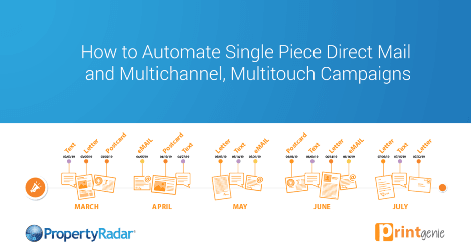How To Use Direct Mail Like The Pros To Boost Your ROI
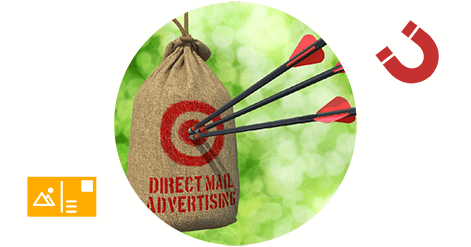
Direct mail may seem antiquated and outdated, but it's anything but that for the pro in the know.
Direct mail isn't some 'old school' marketing practice that's out of touch; old-time marketers won't let die. Direct mail is alive and well, my friend. In fact, the direct mail industry is valued at $44.2-billion, making it the second-largest channel for ad spend in the U.S.
How is that possible? You wonder. When you consider that for every $167 spent on direct mail in the U.S., on average, products or services sold for $2,095, that's a 1,300% return on investment.
Yes, direct mail marketing is more than alive and well – it's thriving. But direct mail only works if you know how to make it work. As with any marketing strategy, it's not enough to do it. You have to be motivated to do it right.
So, if you do not see the kind of ROI from your direct mail marketing campaigns you hoped for, or you're curious and want to learn how to take your direct mail marketing to the next level, then you're in the right place.
In this post, we’ll cover how small business owners like yourself use direct mail advertising to deliver exceptional ROI from their campaigns. We’ll go over:
- Does direct mail marketing still work?
- What is direct mail & direct mail marketing?
- Is direct mail marketing the same as Every Door Direct Mail?
- Types of direct mail
- How to put together your direct mail for greater ROI
- Creating your direct mail marketing roadmap
- Multichannel Marketing - Integrating Direct Mail with Digital
- Automating your direct mail marketing campaigns
Does Direct Mail Marketing Still Work?

Short answer: yes! When done right, direct mail is more effective than ever because it cuts through the digital noise and makes an impact.
Consider this, in today's digital world, we can find and stream any song and read any book we want, in seconds, from multiple platforms and on various devices. Yet, vinyl album sales have climbed more than 20-fold since 2006, and physical books outselling e-books, $22.6 billion to $2.04 billion, respectively, in 2019.
Why? Because while digital is cheap and convenient, we still love holding and looking at physical products. The same is true of direct mail.
The effectiveness of modern direct mail marketing campaigns can't be overstated:
- On average, 41% of Americans look forward to checking their mail everyday. While that skews higher for over-65s (56%), this sentiment is still shared by 36% of 18 to 49-year-olds.
- 73% of US consumers prefer direct mail for brand communications, because it allows them to read the information at their own convenience.
- 66% of US consumers discuss mail from a brand or retailer they haven’t heard of, provided the category is of interest. In contrast, how often do you discuss the marketing emails you receive? We’re guessing not often!
- Direct mail has an average shelf-life of 17 days, compared to just two seconds for direct email.
- Brand recall for direct mail is 70% higher than for digital ads. 75% of people correctly cite the brand name featured in direct mail advertising, compared to44% for digital advertising.
Are there cheaper ways to reach your audience? Sure, it effectively costs nothing to send an email, whereas sending a physical mailer requires design, printing, and postage. But direct mail delivers real results for local businesses because it has something that an email, a social ad, a search ad, and a banner ad will never have: physical impact.
What Is Direct Mail & Direct Mail Marketing?
There are three components to direct mail marketing. Without any one of the three parts, you can't create a direct mail marketing campaign.
Here are the three critical components you need to build your campaign.
1. Direct Mail – any form of a physical piece of marketing or promotional material sent through the mail.
2. Direct Mail Marketing – the process of identifying prospects, aka, your targeted audience, and sending those people your marketing or promotional material. While the exact type of mail sent and messaging employed varies widely, the vast majority of direct mail will incorporate the following features:
- Some way of identifying the sender, such as a brand name or logo
- A call to action (CTA) telling the recipient what to do next
- A means for the recipient to contact the sender
3. Direct Mailing Lists –Also known as marketing or prospecting lists, direct mailing lists are the lifeblood of your direct mail marketing campaigns. Once you have your message/promotion figured out and you know how you want to deliver it, you need to know who you’re sending it to.
Is Direct Mail Marketing the Same as Every Door Direct Mail?
No, they’re two different things.
Every Door Direct Mail is a low-cost way to send physical marketing communications via USPS to entire zip codes or neighborhoods. There's a limited level of targeting available, based on US Census data – things like age and household size.
Clearly, direct mail marketing shares some of those traits. You're still sending physical mailers to people's addresses. But that's where the similarities end.
Direct mail marketing works because it's based on far more advanced targeting. If you want only to reach people with properties of a specific value, who've just put their house on the market, who have recently taken out a HELOC, or live in a condo with 2 children and show interest in cooking and aviation, direct mail marketing is the way to go (as long as you've got the data).
Types of Direct Mail
There are multiple direct mail formats available. This isn’t meant to be an exhaustive list, but it should give you some inspiration for the type of ad you should be sending:
- Postcards: Simple, clear, and concise, postcards are perfect for sending short, punchy messages.
- Letters: Lots of space for copy, which means the messaging can be highly personalized.
- Self-mailers: Otherwise known as leaflets and brochures, self-mailers are completely self-contained, so there’s no need for an outer envelope.
- Catalogs and booklets: Highly visual, and an extremely effective way to showcase multiple products, services, or features.
- Parcels and dimensional mailers: The most expensive format, these 3D packages – like boxes, tubes, and containers – are eye-catching, interactive, and highly engaging.
How To Put Together Your Direct Mail For Greater ROI
Many marketers make a common mistake by sending mailers with generic messaging to anyone and everyone in a given zip code. The logic being, if you make the messaging broad enough to appeal to everyone who reads it, you'll get more leads. But it doesn't work that way.
"When you speak to everyone, you speak to no one." – Meredith Hill
Thinking everyone can benefit from your product or service is the wrong kind of thinking.
If you're motivated to generate greater ROI from your direct mail marketing efforts, then keep reading.
1. Create a Message That Resonates

You must know what your message is before you kick off your direct mail marketing campaign.
Legendary marketing expert Ed Mayer defined the “40-40-20 rule” for direct marketing. He points out that direct mail marketing success is based:
- 40% on the message and the offer
- 40% on the audience
- 20% on creative execution
So, before you even think about buying a direct mail list, you must know your messaging – if you don't have a proven message that converts, why bother sending anything at all.
Think of it this way. If you're trying to raise capital to start a business, you don't go to a VC or bank without crafting and perfecting your sales pitch first, right? The same is true for your marketing outreach. Have a direct mail messaging strategy in place.
2. Know Your Target Audience

Sounds obvious, right? Especially given that according to Ed Mayer, 40% of direct marketing success depends on your audience. If you don't know your audience, how can you begin to find lists that match your audience?
But even the most seasoned marketers don't know their audience as well as they should, which accounts for why many direct mail marketing campaigns fail to deliver the ROI many expect.
Beginning to understand your audience starts with knowing important things about them like:
- Where they live
- Income level
- Ethnicity
- Children at home
- Marital status
- Education level
- Household income
- Household net worth
- Business owner or not
- Hobbies & interests
- Charities they give to
- Mortgage status
- More
NOTE: PropertyRadar provides all this information and more along with an industry-leading 200+ filtering criteria to filter, find, and understand your ideal customer profiles.
The more data you have about your audience along with the more ways you can filter that data, the closer you can get to understanding them.
With information like this, you can start to piece together what their pains, desires, wants, and needs are. A better understanding of your audience helps you create optimal messaging to connect, engage, and ultimately convert them
3. Choose Your Direct Mailing List
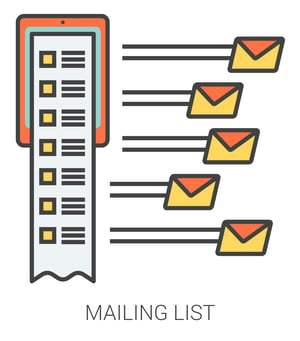
Ok. So, you’ve got your message dialed in. You’ve got your audience profiles fleshed out. Now it’s time to size up your mailing lists.
You’ve got two options when it comes to accessing a mailing list:
- House list
- Third-party list
House Lists – Your house list is, of course, the names and addresses you've already collected. To some degree, this list knows your brand, making them semi-warm leads and more receptive to your marketing outreach. The downside is it takes time and resources to build a substantial house list.
And if you're like most SMB owners, you don't have time to wait around for your lead list to grow. You'll happily buy a list that consists of a targeted audience who, with the right message, you know you can turn from cold prospects to hot leads.
Third-Party Lists – These 3rd party lists are great in that they let you take immediate action. There is no waiting. The problem is that the data used to build these lists can be outdated, inaccurate, and generally low quality. Unfortunately, it's usually not until you get a miserable response rate and returned mailers with 'not at this address' stamped on them that you realize you've wasted your time and money.
Alternatively, using a comprehensive public records platform like PropertyRadar with enhanced data and insights on 100's of millions of properties and property owners across the country can be a game-changer.
Unlike direct mail list services that claim to have the most recent and accurate data, PropertyRadar actually does, which is why it's been the world's best list builder since 2007. With data that is cross-referenced, back-filled, and back-tested against multiple sources, PropertyRadar's mailing lists are updated every day, focusing on:
- Value
- Quality
- Timeliness
The process to deliver you refined data is so thorough, PropertyRadar actually creates NEW data that you won’t find in public records. Two examples include:
- Estimated loan positions
- Transfer types
With an industry-leading 200+ criteria, you can define your ideal customer profiles and build unlimited, segmented mailing lists. Plus, PropertyRadar's dynamic mailing lists automatically update themselves with new leads, automatically alert you to new opportunities, can trigger direct mail marketing campaigns, and each list comes with deep insights you won't get anywhere else.
4. Choose Your Delivery Method

Once you've built your perfect mailing list, it's time to decide how to send your direct mail advertising. Again, you've got a couple of options:
- Shared mail: Your direct mailer is packaged together with ads from multiple other brands. You share the cost of postage, but it’s far less likely that your message will stand out. Also, by its very nature, shared mail is less targeted, because only a small number of businesses – or possibly none at all – will want to reach exactly the same audience as you.
- Standalone mail: The opposite of shared mail! With standalone, it’s all about you. That means better targeting, lower competition, and much greater impact. Sure, it costs a bit more, but the return on investment will likely be far greater.
5. Send It!

You’ve defined your audience and built a direct mailing list to match. You’ve got your messaging dialed in. You’ve chosen the mailer to deliver your direct mail ad.
Now, it’s just about putting it all together and sending your direct mail ad!
Creating Your Direct Mail Marketing Roadmap
A lot of local businesses talk themselves out of direct mail marketing before they even begin. Why? Because they think it'll be too complex to build a direct mail campaign from scratch. They believe that they don't have the time, the resource, the budget, or the expertise.
In reality, it's entirely possible to send simple, one-piece mailers. One of our partners, PRINTgenie, offers one-piece mailers as a service and even provides templates for business owners to quickly build a multichannel campaign.
However, for maximum impact, business owners should be building multi-touch marketing outreach workflows.
Again, this might sound complex, but it's not – it just requires a little planning and a commitment to testing different approaches until you find what works best. A simple workflow could look like this:

There are lots of other things to play around with. For instance, you can test a different Call To Action (CTA) and mail format with each message you send:

And don’t treat direct mail marketing as an isolated activity; it should complement your other sales and marketing efforts. So mix it up by adding SMS messaging, email, and cold calling into the workflow, too.
Multichannel Marketing - Integrating Direct Mail with Digital
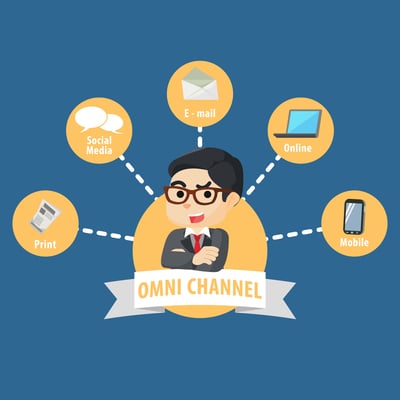
Let's say you've got to remember something super important in a month.
Would you only write a note in your calendar and leave it at that? Or would you also pin it to your fridge, set a reminder on your phone, and tell your partner or friends or family to remind you?
The second one, right?
Well, the same is true of marketing. Combining multiple channels will always drive better results than leveraging just one channel because it dramatically increases the chance of your message cutting through the noise.
In fact, research shows that combining three or more channels delivers an average engagement rate of just under 19%, compared to 5.4% for single-channel campaigns. What's more, customers who interact with your brand via multiple channels are 250% more likely to buy than those who only engage with a single channel.
Again, this might sound complex, but it's not – it just requires some planning and testing until you figure out what works best for you. A simple workflow might look like this:
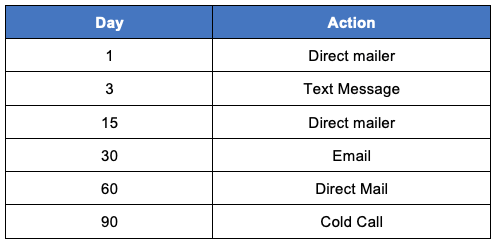
The possibilities are practically endless. It's simply a matter of committing to implementing a workflow and testing it. The key takeaway here is, mixing direct mail marketing with digital is best!
Automating Your Direct Mail Marketing Campaigns
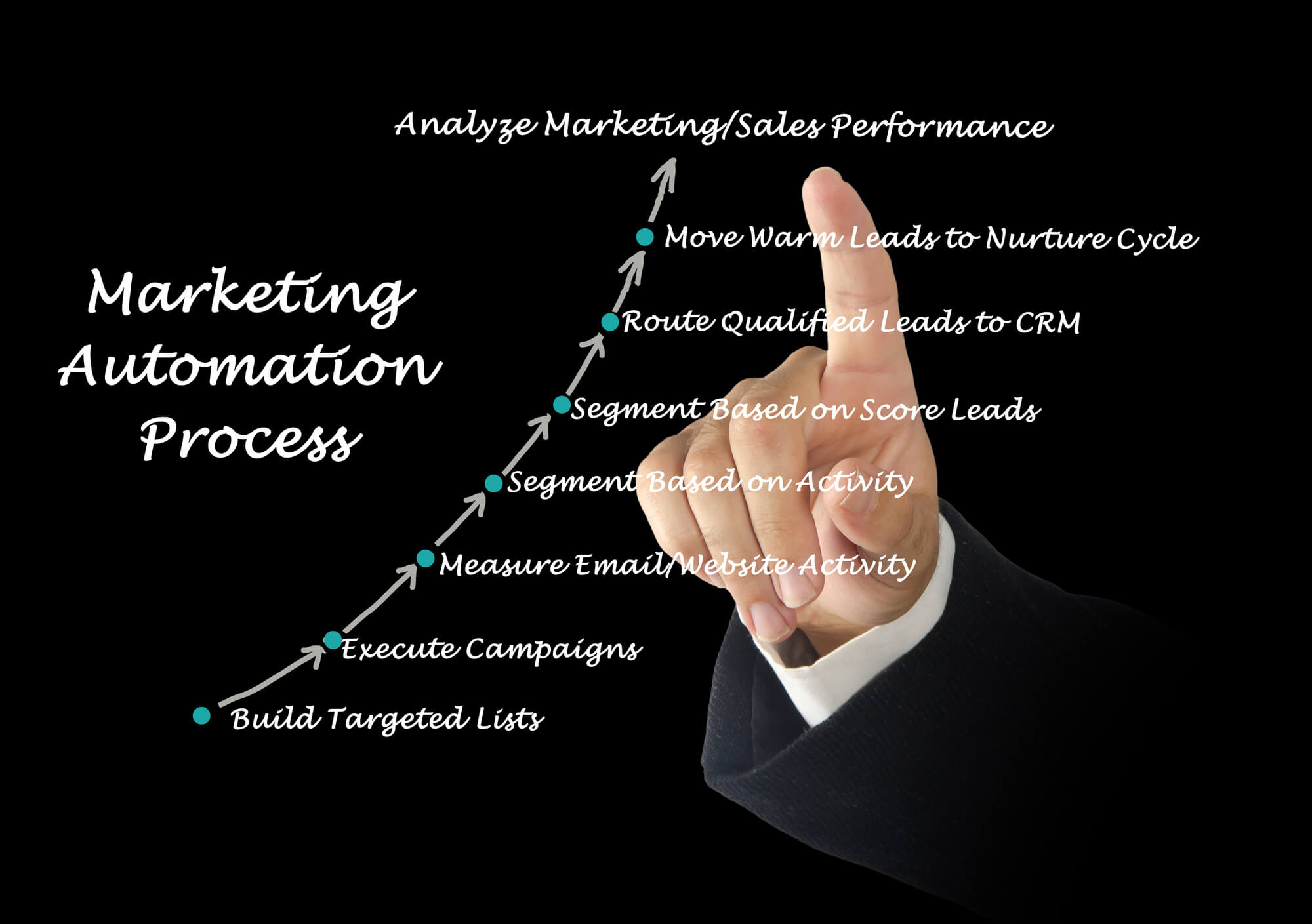
Trigger Direct Mail Marketing Automation (Your Secret Weapon)
Want to know how the pros achieve exceptional results through direct mail marketing, time and time again?
One word: automation.
Automating your marketing doesn't just save you time; it allows you to target people in a way you'd never be able to do yourself, even if you had a whole team of marketers.
For instance, say a particular life event – like a divorce, the birth of a baby, the death of a joint tenant, a property is listed, or a HELOC is taken out – signifies that a prospect might have an immediate need for your services.
Well, with the PropertyRadar dynamic list automation, you can get daily updates when the life events occur and trigger your marketing outreach – whether that's a simple single-piece mailer or a multitouch, multichannel campaign. No other list provider can unlock this level of timeliness and laser-focused targeting.
Putting Direct Mail Marketing Into Action With PropertyRadar
Direct mail marketing is a powerful small business marketing strategy that every motivated business should be using! Moreover, every data-driven professional should be using a comprehensive property and property owner platform like PropertyRadar to help maximize the ROI of their direct mail efforts.
- Discover& build direct mailing lists of targeted leads: Use the 200+ industry-leading criteria to discover and qualify new leads & opportunities, and make an unlimited number of highly targeted, segmented direct mail mailing lists.
- Understand your prospects: Drill down into any given property, property owner, their neighborhood, and more to better understand their wants, needs, and desires so that you can create compelling offers.
- Connect with potential customers directly: Turn leads into customers by reaching out to them via direct mail, on the phone, email, text, and more.
- Automate your direct mail marketing: With over 2,000 CRM, project management, and productivity tools to integrate with PropertyRadar, you can create and customize your marketing automation to put your marketing efforts on cruise control.
Direct mail marketing can be a simple, one-time mailer or it can be a more advanced, multitouch, multichannel marketing campaign.
Whatever you choose to do, one thing should be clear to you, direct mail is very much alive and well, and if you’re not using it to find new customers and grow your business, you’re missing out.
Discover the power of PropertyRadar by signing up for your free trial today.

